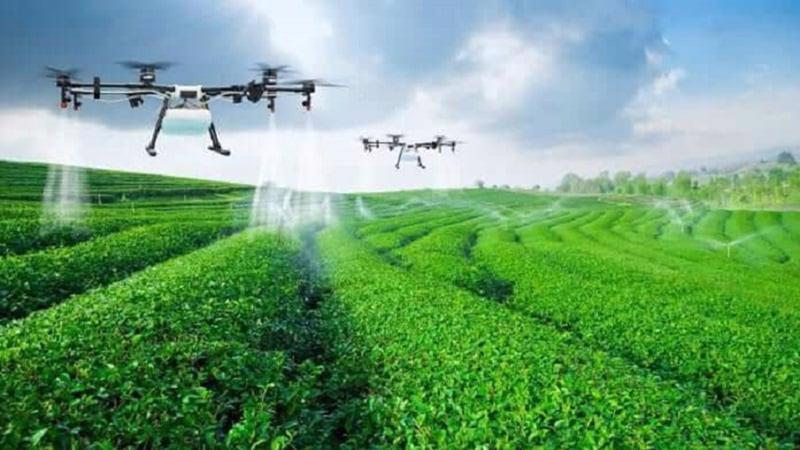The Ministry of Agriculture and Rural Development (MARD) has set a target of attracting $25 billion worth of FDI to the agriculture, forestry, and fisheries sector by 2030, with priority given to high-technology and environmentally-friendly projects and farm produce where Vietnam boasts strength.
FDI attraction in the sector has been sufficiently encouraging over the years, creating jobs for farmers, modernizing agriculture, and contributing to export performance.
However, according to many analysts, the structure of FDI has failed to match the sector’s development orientation. It has to date primarily focused on wood processing and exports, animal husbandry, and the coffee and pepper trade and exports. Meanwhile, FDI in rice growing and exports, seafood processing, farm produce, and food processing remains limited.
Wood exports popular
Investment from foreign-invested enterprises (FIEs) in the wood industry has been on the rise, according to a report on “FDI in Vietnam’s Wood Industry: Situation and Development Orientation from 2020 to September, 2023”, published by Forest Trends and the Vietnam Timber and Forest Product Association.
In the first three quarters of 2023, wood processing projects rose 1.25-fold in number and 2.5-fold in value year-on-year.
The wood industry attracted 33 FDI projects during the period, with total registered capital of $217.56 million. Of these, 19 projects invested in wood processing with total capital of $119.54 million, accounting for 57.6 per cent of project numbers and 54.9 per cent of capital. Seven projects invested in producing artificial wood planks, with $50.91 million, while wood pellets attracted two projects with capital of $40.8 million.
In the 2021-2023 period, the export revenue of FIEs in the wood industry accounted for 47-49 per cent of the total.
FDI flowing to livestock
The livestock industry also recorded positive results in FDI attraction in the 2021-2023 period. Total FDI in the industry has reached $2.2 billion in 81 projects, according to the Foreign Investment Agency at the Ministry of Planning and Investment.
Most FIEs investing in the industry are global names such as C.P, Japfa, New Hope, Emivest, De Heus, and IFC. They have developed not just a single field or value chain but an entire ecosystem in the livestock industry, from animal breeding, animal feed, medicine, and husbandry to processing.
Though the number of foreign enterprises accounts for only a small proportion of those operating in the livestock industry, they stand out in terms of production output. For example, in animal feed production, the number of FDI enterprises account for 25.7 per cent of the total of 237 but their products hold a market share of nearly 60 per cent. Thailand’s C.P Company alone provides over 5 million pigs, more than 200 million eggs, and over 80,000 tons of chicken products to the market each year, accounting for 19.5 per cent of Vietnam’s total meat products and 4 per cent of its chicken products.
Professor Nguyen Duy Hoan from the Thai Nguyen Agriculture and Forestry University said large-scale livestock farms have continued to grow thanks to foreign investment, helping the country’s livestock industry gradually approach advanced counterparts around the world.
The number of large-scale livestock farms of more than 1,500 pigs accounts for nearly 30 per cent, including 16 major enterprises with nearly 6 million heads.
FIEs have also introduced advanced and modern technology to Vietnam, helping local companies gain access to new technology and diversify their products to boost exports and increase product value, according to the Professor.
Shortcomings in FDI attraction
Dr. Nguyen Anh Phong from the Institute of Agriculture and Rural Development Policy and Strategy said FDI attraction in the agriculture sector, including in forestry, remains limited and has failed to tap Vietnam’s full potential and strengths.
FDI attraction in the sector is also not sustainable and accounts for only a small proportion of investment going to industry and services. The quality of FDI projects is also not high, with the majority being of small scale.
Dr. Phong said there is no effective strategy to attract FDI in agriculture, forestry, and fisheries, and it has proven more difficult to draw FDI into the sector compared to others. It also lacks a specialized agency monitoring and tackling obstacles in promoting, attracting, and implementing foreign projects.
In order to boost FDI attraction, he proposed the State adopt mechanisms and policies to develop agricultural infrastructure. Specifically, it is necessary to introduce a development strategy and logistics plan for the agricultural value chain, with priority on infrastructure development. Enhancing investment in digital infrastructure is also necessary to attract foreign investors with agricultural projects in the digital era.
Dr. Tran Thi Thanh Huong from the Thai Nguyen Agriculture and Forestry University suggested promoting FDI attraction in high-tech agriculture, to contribute to raising mechanization and modernization in the production process. FDI in high-tech agriculture remains low, accounting for just 18 per cent of total foreign capital in the sector.
She recommended building a preferential policy framework for businesses investing in high-tech agriculture. The government also needs to adjust agricultural land planning and deal with difficulties in site clearance to secure land funds and attract investors.
Vietnam also needs to improve its human resources in addition to investment in infrastructure. The government should implement policies relating to logistics, power grid networks, information technology systems, irrigation networks, and related policies to create a firm foundation for the development of high-tech agriculture, helping the sector become more attractive to foreign players.
In order to improve the investment environment to bring in more FDI, MARD plans to undertake a number of measures, such as speeding up administrative reform, simplifying business and investment conditions, creating a more favorable business environment, reviewing land use plans, and assessing the efficiency of agricultural land use by localities, according to the ministry’s International Cooperation Agency.









 Google translate
Google translate